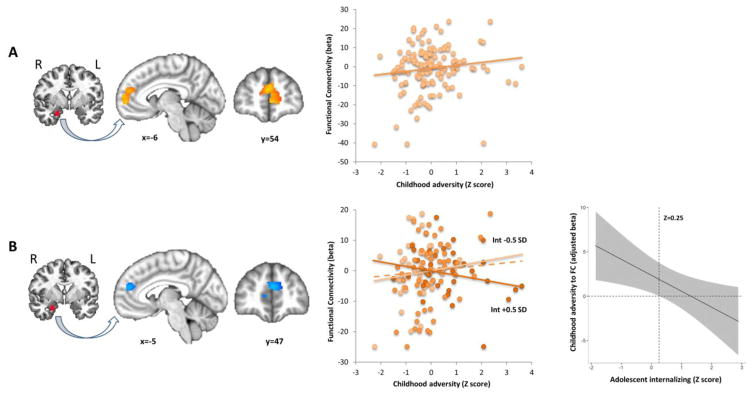Figure 3.
Childhood adversity predicts greater amygdala-mPFC functional connectivity in adolescence but is moderated by internalizing symptoms. Functional connectivity estimates were derived from the negative vs. neutral image contrast, using a seed based approach. The seed region and connectivity results are shown on the left, with scatterplots of childhood adversity (Z-scored) vs. functional connectivity cluster averages in the middle panel. (A) Main effect of childhood adversity on amygdala-mPFC connectivity (k=699 voxels, p<0.05 corrected). (B) A childhood adversity by adolescent internalizing interaction in an overlapping cluster revealed that childhood adversity predicts greater amygdala-dmPFC connectivity in lower but not higher internalizing adolescents (k=333 voxels, p<0.05 corrected). The middle panel shows a scatterplot depicting the interaction, with trend lines shown for childhood adversity vs. functional connectivity at adolescent internalizing Z-scores less than −0.5, or greater than 0.5 (i.e. ± 0.5 SD). Points/lines are color coded for internalizing levels. The dashed line represents the average effect across all participants. The right panel shows a conditional effects plot demonstrating the effect of childhood adversity on amygdala-mPFC connectivity across the full range of internalizing levels. Childhood adversity predicted significantly greater amygdala-mPFC connectivity only in adolescents with internalizing Z-scores < 0.25 (vertical dashed line). N=132. mPFC = medial prefrontal cortex, Int = internalizing, SD = standard deviation.

